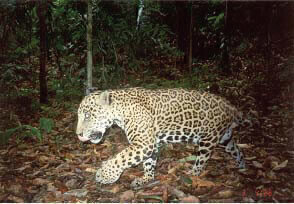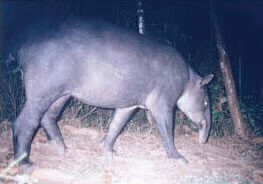News & Views
Linking Wildlife Sanctuaries Attracts Funding for New Belize Project
May 18 2009
The University of Southampton is embarking on a new project to establish natural corridors that connect existing wildlife sanctuaries in Belize to protect the future of a number of animals such as jaguars, ocelots and tapirs.
The University’s School of Biological Sciences has been successful in obtaining a Darwin Initiative Grant of £174,000 to plan and implement the project.
The three-year collaborative project with the Panthera Foundation and the University of Belize involves students of wildlife conservation at the new Environmental Research Institute of Belize University. It aims to establish a tradition of skills training that enables Belizeans
to monitor the health of their own natural resources.
Belize already protects wildlife across some 40 per cent of its land area, but this is split into two conservation blocks: the Maya Mountains in the south and the Selva Maya in the north, separated by a large unprotected strip in the middle.
The wilderness belt in between the two blocks is a vital corridor connecting the only two large natural areas within Belize, and it is a key component of the internationally proposed Mesoamerican Biological Corridor. Two highways cross the belt, but with significant urban development planned for the unprotected strip, the wilderness will be fragmented and highway traffic will increase, isolating the remnants and encroaching on wildlife.
The principal focus of the project in Belize is on species of medium to large mammals living in sparse populations in vast areas of wilderness. These include jaguar, ocelot, tapir, species of deer, peccary, armadillo, coati (a type of racoon), and paca (a large rodent). The animals will be counted by photographing them on a network of camera ’traps’, mainly at night, so that their numbers can be assessed within the area each currently inhabits. The study will monitor each species that crosses the two major highways and assess the potential conflicts, bearing in mind the need for both human and wildlife sustainability. A continuous wildlife corridor will then be planned by zoning development within the unprotected strip, identifying selected areas for formal protection from development.
Principal Investigator and Reader in Ecology, Dr Patrick Doncaster from the School of Biological Sciences says: "This is a great opportunity to safeguard Belizean wildlife by securing a corridor through the unprotected belt. Unregulated development of this strip would certainly isolate Belize’s two main protected areas from each other during the next 10 years and endanger mammals, such as jaguars and their prey which need to roam across large areas. "The School of Biological Sciences already has postgraduate students monitoring the jaguar population within one of the designated wildlife reserves and its environs . Over the next three years we hope to collect sufficient data to ensure that this crucial corridor is protected in law. The Darwin project aims to balance the work of wildlife conservationists and economic development agencies whilst ensuring a sustainable livelihood for the local inhabitants."
Digital Edition
ILM 49.5 July
July 2024
Chromatography Articles - Understanding PFAS: Analysis and Implications Mass Spectrometry & Spectroscopy Articles - MS detection of Alzheimer’s blood-based biomarkers LIMS - Essent...
View all digital editions
Events
Jul 28 2024 San Diego, CA USA
Jul 30 2024 Jakarta, Indonesia
Jul 31 2024 Chengdu, China
ACS National Meeting - Fall 2024
Aug 18 2024 Denver, CO, USA
Aug 25 2024 Copenhagen, Denmark



.jpg)

24_06.jpg)













